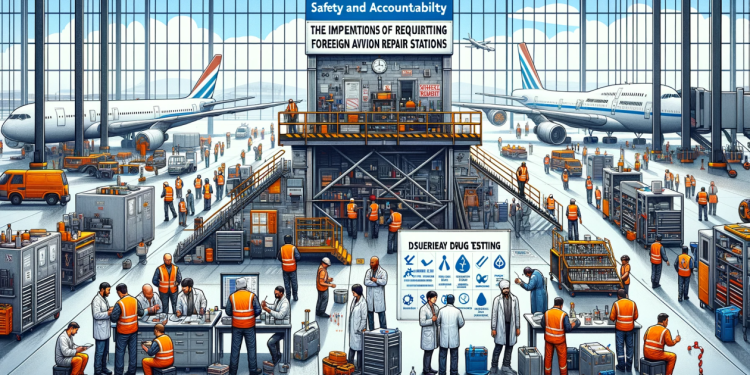Introduction
The aviation industry, known for its high safety standards, requires stringent drug testing protocols not only for pilots and air traffic controllers but also for a broad range of personnel involved in daily operations. This article explores the critical, yet often overlooked, importance of drug testing across various roles beyond the cockpit and control towers.
Understanding Drug Testing Regulations in Aviation
The Federal Aviation Administration (FAA) mandates comprehensive drug and alcohol testing service aimed at maintaining the safety and integrity of the aviation industry. These regulations cover a wide spectrum of substances and prescribe specific testing procedures and frequency to ensure compliance and safety.
The Role of Maintenance and Ground Crew
Maintenance and ground crew are pivotal in ensuring the operational readiness and safety of aircraft. Drug testing within these groups is vital, as impairment can significantly jeopardize the effectiveness and safety of aviation operations.
Drug Testing for Cabin Crew Members
Cabin crew members face unique challenges and pressures that can sometimes lead to substance abuse. Regular drug testing helps ensure that these essential personnel perform their duties safely, maintaining the well-being of themselves and passengers.
Administrative and Support Staff
While not directly involved in aircraft operations, administrative and support staff play crucial roles that impact the safety and efficiency of aviation activities. Drug testing for these roles helps maintain a safe and secure workplace environment.
Drug Testing Technology and Methods
Current drug testing technologies range from traditional urinalysis to advanced blood tests and hair samples, each with its own set of advantages and limitations. This section discusses the latest advancements and their applications in the aviation industry.
Challenges in Drug Testing in Aviation
Drug testing in aviation is not without challenges, including privacy concerns and the potential for false positives, which can have significant career and legal implications for individuals.
Impact of Substance Abuse on Aviation Safety
Substance abuse in the aviation industry can lead to catastrophic outcomes. This section provides statistical data and discusses several incidents to highlight the critical nature of effective drug testing programs.
Preventive Measures and Employee Assistance Programs
Employee Assistance Programs (EAPs) and other preventive measures play a crucial role in supporting staff dealing with substance abuse issues, ultimately helping maintain safety standards and assist recovery.
Legal and Ethical Considerations
The implementation of drug testing programs involves a delicate balance between ensuring safety and respecting privacy. This section explores the legal frameworks and ethical debates surrounding drug testing in the workplace.
The Future of Drug Testing in Aviation
Emerging trends and technologies promise to enhance the effectiveness and efficiency of drug testing in the aviation industry. This section looks at what the future might hold, including innovations in testing methods and regulatory approaches.
Global Perspectives on Drug Testing
Different countries have varying regulations and practices related to drug testing in aviation. This comparative analysis sheds light on global standards and how they impact international operations.
Role of Education and Awareness in Reducing Drug Use
Educational initiatives aimed at reducing drug use within the aviation industry have proven effective. Success stories and program evaluations underscore the value of these efforts.
The Economic Impact of Drug Testing
An analysis of the costs versus the benefits of drug testing within the aviation industry, including its impact on insurance premiums and company liabilities.
Conclusion
The extensive scope of drug testing in the aviation industry underscores its significance in maintaining safety and efficiency. As technologies and methodologies evolve, the industry continues to strive for a balance between innovation, privacy, and safety.



























Discussion about this post